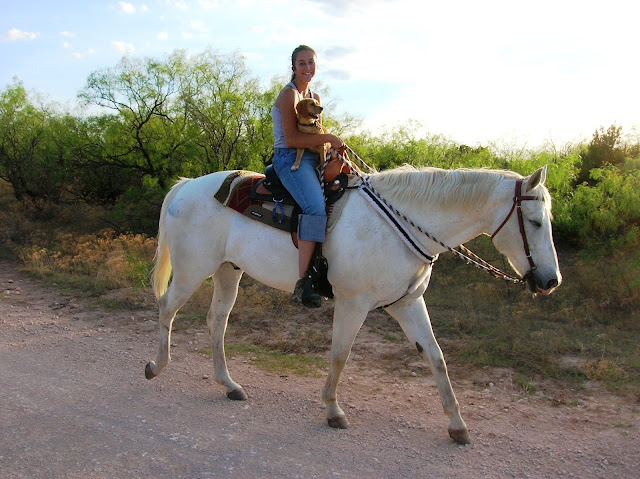With over 80 miles of trails the park is known as a secret hikers paradise. From the highway the famous El Capitan steep cliff face jets out mystifying drivers passing by. There are no roads through the park so hiking in is the best way to experience all that the park has to offer. The area is a hot bed for geologists who come to study the marine fossil reef that was formed about 265 million years ago. What is left behind is now an oasis in the desert.
We took about a 5 mile round trip hike up into McKittrick Canyon tucked in the middle of 2,000 foot high limestone walls. Along the way our Education Curator who has spent many years at several parks as a naturalist pointed out local flora and fauna. In a short day hike we experienced so much of what the Chihuahuan desert has to offer. Many think the desert is barren, I think not!
Our group being led by the El Paso Zoo Education Curator.
These trees are beautiful. Texas Madrone.
The Texas Madrone tree is native to the southwestern US and farther south into Mexico and Central America. In the fall the berries provide an essential food for wildlife. The bark of this evergreen tree is smooth and reddish in color referred to in the local names of naked Indian and lady's legs.
Two of the El Paso Zoo's volunteers, Ruby and Sara, petting a Texas Madrone.
Water! There is a spring fed creek that carved the canyon and continues to do so today.
We even found life in the river with several species of water striders and snails. Farther up the creek there are introduced fish.
Rainbow trout is my best guess. I should have had my ichthyology notes with me!
A once in the plant's lifetime view of this beautiful plant.
There are over 200 species of agave plants. The Lechugilla (Agave lechugilla) is an indicator species of the Chihuahuan Desert. The two common species of agave found in the Guadalupe Mountains are the lechugilla and the century plant agave (Agave americana). What is so unique about the agave plants is that they are perennial plants that can live 10 to 30 years but each plant only grows one stalk and flowers once in its lifetime and then dies. It takes the entire life of the plant for it to collect enough energy to be able to produce the center stalk and flowers. The plants in this area are very important for native people but now their use is being extended beyond the region. Agave syrup can now be found throughout stores nationwide and is a sweetening syrup made from agave. Agave syrup is recommended for people that have diabetes because it is high in fructose. A sweet liquid gathers in the center of the plant called "honey water" and from the fermentation of this liquid locals make a liquor beverage called Pulque. There are Pulquerias, little bars in Mexico, that serve home made pulque that is said to have an effect beyond just liquor.
Many different insects were smothering these flowers.
An entire view of the agave.
I found a Texas Tan Tarantula on the trail!
Tarantula bites are like a very bad bee sting and are painful but what is most dangerous is that they can shoot microscopic hairs at you. So don't pick them up! Usually the ones you see out on the move are males looking for females to breed.
Heather gave him a bit of water for his journey.
A beautiful sotol plant.
Sotol is another plant important for native people. It was used as building material, clothing material such as sandals and food (the center can be eaten). Sotol juice from the plant can also be fermented into a liquor.
A bottle of sotol. A fellow Education Specialist, Antonia had some made by her Uncle!
Later on down the trail we saw a Tarantula Hawk!
Big toothed Maple trees starting to show their fall colors.
Why do leaves change colors?
Photosynthesis is the process plants go through to produce their own food and chlorophyll (what makes leaves that green color) is responsible for photosynthesis. Therefore chlorophyll is extremely important to the plant. To grow and photosynthesize plants need water, sunlight and nutrients in the soil. The water is held in the leaves held high looking for sunlight. If you think about how thin a leaf is, very thin, it would be very easy to freeze in cool temperatures. Just like the areas that get coldest on your body (your extremities), the trees leaves are most susceptible to freezing. If the leaves freeze and die the tree loses that water and chlorophyll in the leaves. Therefore, in preparation for cold winter temperatures that could freeze their leaves, trees suck in their very important chlorophyll into their trunks. The other colors (red, orange, yellow), those are chemicals that are always present in the leaves but because of the green chlorophyll are not visible until the chlorophyll is sucked back into the trunk.
The leaves and area is beautiful!
A group picture amongst amazing colors.
A sotol plant in the midst of Ponderosa pines and maples! A crazy mix of biodiversity not found in many areas.
A group picture in the dry creek bed.
The Guadalupe Mountains have hiking trails for all different levels. Only two hours outside of El Paso people can experience the beauty and solitude of nature. Plan a trip. Don't forget to bring lots of water and snacks for the trails. There are also camp sites available. Check out the website for more details - click here.
Guadalupe Mountains also has the highest peak in Texas at 8,751 feet. Expect a blog sometime about the trek to the top because David and I are going to do it!
Continue your adventure!


























































